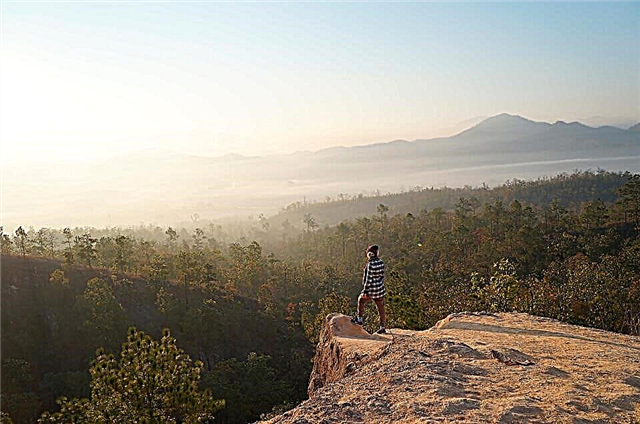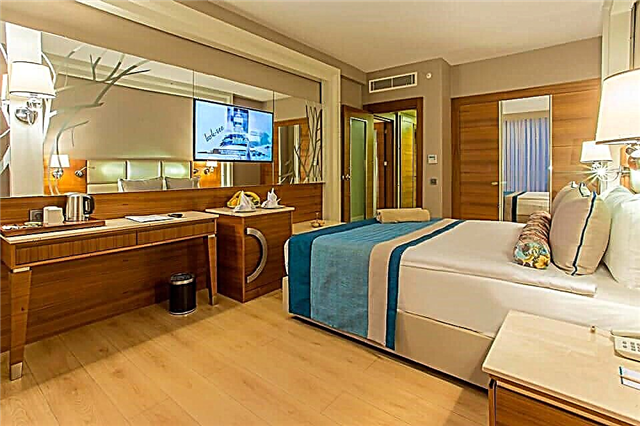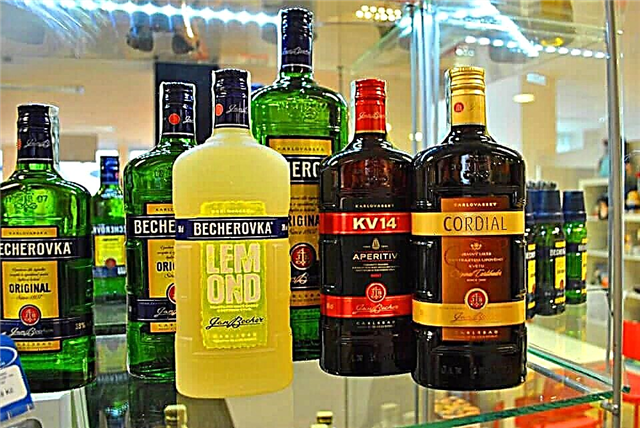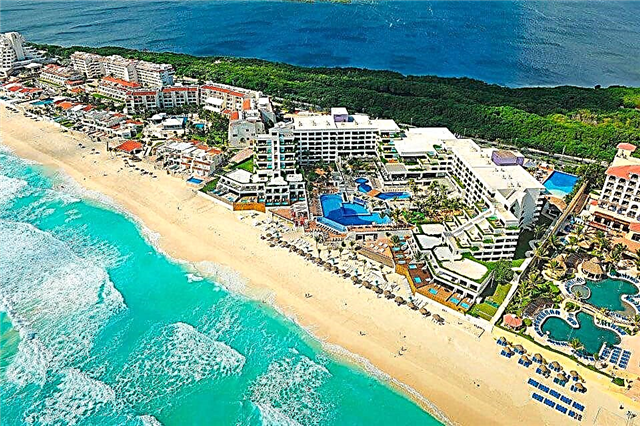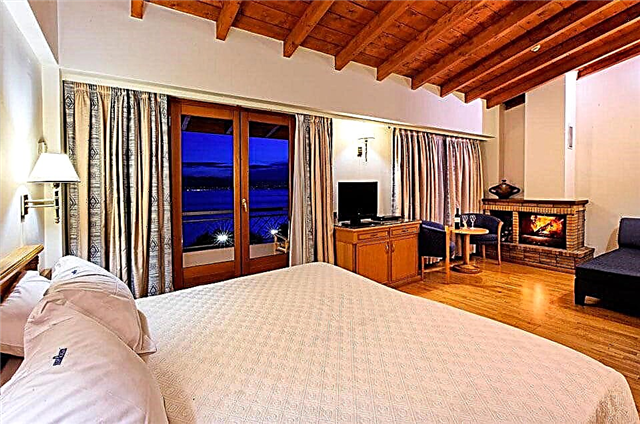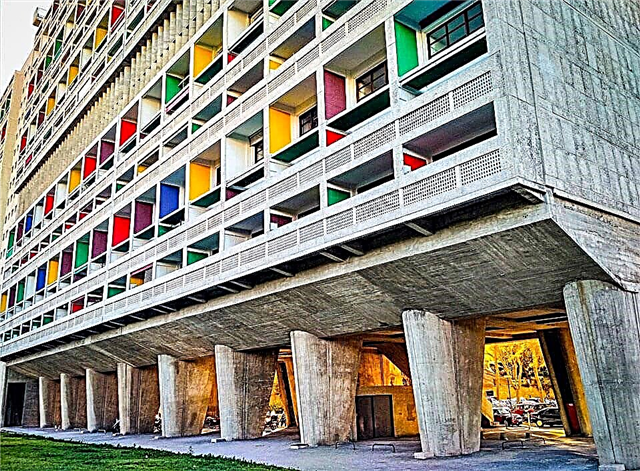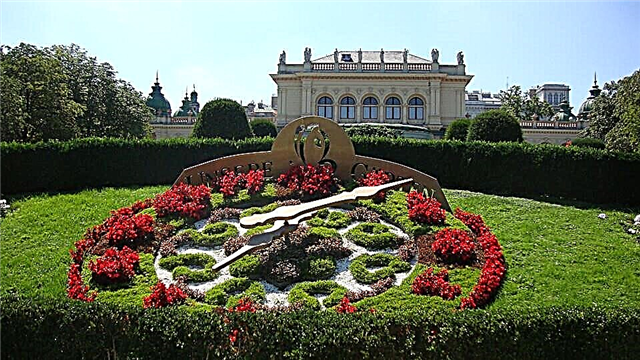Luxurious and tsarist Moscow has always attracted numerous tourists. Its majestic Cathedrals, Churches, modern architectural structures, unique metro stations, parks, gardens, avenues and boulevards are of great spiritual value to Russia. Every corner of the city is saturated with the spirit of the history of our Motherland. You can't see the whole city in one trip. Therefore, it will be correct to first compose a cheat sheet for yourself on the most interesting and beautiful places in Moscow.
Kremlin and Red Square

In the center of Moscow, on the high bank of the river, for a long time, the main building of the capital, the Kremlin, has been towering. The architectural ensemble consists of a fortress, buildings of cathedrals, temples, palaces with royal chambers, squares, streets.
Powerful walls of the fortress are guarded by 20 towers, among which there are no identical ones. For several centuries, the towers have been symbols of the Russian state. The ensemble includes 8 Cathedrals. Among them is one of the main cathedrals of the Russian state - the Assumption.
Solemn coronations of emperors and wedding ceremonies took place here. The oldest square in Moscow, Cathedral Square, is located on the territory of the Kremlin. While on it, you can see the Patriarch's Chambers, the Assumption, Annunciation, Archangel Cathedrals, the Temple of the Twelve Apostles, the Faceted Chamber, the Ivan the Great Bell Tower.
Now the Kremlin is the residence of the President, museums work. One of them is the Moscow Kremlin State Historical and Cultural Reserve. The museum hosts interesting excursions telling about the times of the White Stone and Brick Kremlin.
It is proposed to pass through the Spasskaya Tower and Red Square. The square is often called the heart of the city, its soul. A silent witness to the fateful events of the country, surrounded by majestic architectural monuments. In ancient times, royal decrees sounded on the frontal place of the square.
The rulers went out through the Spassky Gate, troops went to war. The locals called this place “beautiful or red”. Since 1661, by the tsar's decree, the square received the official name "Red".
Now it is considered one of the most beautiful squares in the world. The fabulous Cathedral of St. Basil the Blessed, sparkling with folk patterns, the Kremlin towers, the famous bell ringing preserved the historical atmosphere on it, the spirit of the great Russian power. Attraction address: metro station "Alexandrovsky Sad", Kremlin, Red Square.
Kremlin in Izmailovo

The historical and architectural complex in Izmailovo appeared on the site of the workshops of artisans who lived under Tsar Alexei Mikhailovich of the "pre-Petrine" era of the capital. The original ensemble was erected in the image of the ideas of the Izmailovo Vernissage.
In the center of culture and entertainment there are excursions, holidays, meals in the Russian spirit in restaurants and cafes. Visitors are offered dishes of old Russian cuisine. Of particular interest is the acquaintance with the traditions, culture, crafts of the peoples of Russia.
During a walk through the territory of the ensemble, it is proposed to independently test the techniques of many folk crafts: felting from felt, pottery, baking bread, making blacksmiths.
The architectural style of the Izmailovo complex is a synthesis of the best Kremlin options that existed on Russian soil at different times. The examples of the buildings were the buildings of the royal residence, made according to the drawings, drawings of the 16th and 17th centuries (the main ones were the Cathedral of St. Nicholas and the Palace of the Russian meal).
The Palace, created by the imagination of architects and decorated with numerous elements of a real royal home, offers 10 banquet halls. The balconies, windows, gallery overlook the square where the main events of the Kremlin take place.
There are several interesting museums on the territory (Bread, Russian Navy, history of vodka, Russian folk toys, museum of miniatures "World History in Plasticine", etc.).
Cathedral of Christ the Savior

The architectural monument was created in honor of the victory in the war with Napoleon. Blown up during the Stalinist regime, it received a second life at the end of the last century. The Cathedral is considered the main Temple of Russia.
It hosts services with the participation of the Patriarch of All Russia, meetings of Bishops' Councils, and church forums. From a historical point of view, the Cathedral of Christ the Savior serves as a unique museum that stores important events of the entire era of Russia, a memorial of Russian military glory.
The original idea of a temple dedicated to the Savior was proposed by the first architect Alexander Vitberg. In terms of grandeur, the building was supposed to surpass the famous Cathedral of Peter and Paul in Rome. The Cathedral is located not far from the Kremlin.
The restored interior decoration is represented by numerous images of the Lord's mercies, figures of saints, Russian princes who did not spare their lives in the struggle against the enemy for their homeland. The names of the brave heroes of the battles of 1812 are written on the marble board in the lower part of the gallery.
Shishkin porphyry, Italian marble, labrador stone, precious stones, and gold leaf were used in the design of the Cathedral. Now in the huge hall of the Cathedral there are Christmas trees for children for the New Year. Along with excursions, it is proposed to visit the observation decks of the Cathedral. The Kremlin is clearly visible from one of them.
Arbat

It is suggested to plunge into the atmosphere of the old city, to feel the spirit of the bygone centuries while walking along the Old Arbat. Its alleys, small courtyards evoke emotion to the sound of the famous songs of Bulat Okudzhava.
Each step along the Arbat is surrounded by buildings, places associated with the life history of many famous personalities. For example, relatives of Natalia Goncharova (Pushkin's muse) lived in house no. 4 (behind the Prague restaurant). The house number 53 was the headquarters of the poet.
The newlyweds lived in it for the first time. In honor of the 200th anniversary of Pushkin, a monument to the couple who showed the power of great love was erected next to him. The famous house of Mosselprom is located opposite the Gogol monument. The wall of memory of Viktor Tsoi has become a real place of pilgrimage. The first mention of the street dates back to 1493. The road to Smolensk passed along it.
Buildings in the Empire style appeared on it in the 19th century. At the end of the 19th century, it became a commercial building, many buildings passed into the possession of merchants, and tenement houses appeared. At the beginning of the 20th century, writers, musicians, painters, theater and cinema workers moved here.
The Vakhtangov State Theater is located on this street. Now it is simultaneously a museum, a market with fashionable shops and restaurants. The pedestrian section "Old Arbat" begins at the metro stations "Arbatskaya" or "Smolenskaya".
VDNKh

In honor of the 20th anniversary of Soviet power in 1939, an unusual exhibition was opened in Moscow, showing the achievements of Soviet industry in various fields. The city of dreams of the Soviet man among pavilions, fountains, sculptures, park alleys, stadiums, created by the possibilities of the Soviet economy in all regions of the country.
Each republic tried to show its best achievements in the pavilions of the exhibition. One could see the possibilities of Russia only in this place. Therefore, everyone was eager to visit VDNKh.
The famous sculpture "Worker and Collective Farm Woman" by Mukhina was an invariable symbol of the victory of socialism. Now VDNKh is considered the largest entertainment and educational ensemble in Russia. Along with the restored old pavilions, modern buildings dedicated to the conquest of space and cybernetics have appeared. On the territory of the exhibition there are 49 buildings recognized as masterpieces of architecture and included in the lists of cultural heritage monuments.

Parks, alleys, ponds, beautiful flower beds allow you to spend your holidays here in an extraordinary relaxing atmosphere.Expositions of the best products from various sectors of the national economy are constantly held.
Music of concerts, works from literary evenings sounds. The largest oceanarium in the country, a village of fishermen, attractions with a huge Ferris wheel, and a green theater are open for visiting. A large skating rink is filled in in winter.
In summer, it is offered to ride bicycles, try your hand at the rope park, play table tennis, badminton. The rental of gyro scooters, rollers, bicycles works regularly. The main entrance is from the side of Prospekt Mira. The easiest way to get there is by metro to the VDNKh station.
Hermitage Garden

In Moscow, there are over 100 parks and gardens used for walking and entertainment. Among them, the Hermitage recreation area in Karetny Ryad occupies a special place. This year the famous garden is 125 years old.
The alleys of the monument of landscape gardening art, its theaters, stages, pavilions filled with Muscovites, heard the voices of Chaliapin and Nezhdanova. Rachmaninoff's music, admired the playing of Sarah Bernhardt, Komissarzhevskaya, Ermolova. The Moscow Art Theater was opened here in 1898.
His first performances were Tsar Fyodor Ioannovich, premieres of Chekhov's plays. A year after the opening in Shchukinsky Park (named after the creator and the main financier during the creation of the park), the first movie screening was held here in Moscow at the cinematography of the Lumiere brothers.
The first game, What? Where? When?". There are many interesting sculptural groups in the garden. Among them is the Silver Heart monument to all lovers, erected in 2006.
Now the Hermitage Garden is the center of the summer pop, touring life of the city. There are three theaters on a small square: the Hermitage, the New Opera, and the Sphere.
In summer, there is a silent open-air cinema "SUMMER TIMES" (sound is broadcast through headphones). Inflatable bright poufs are on the large lawn. In winter, a skating rink is poured in their place.
Patriarch's Ponds

The name of the place evokes in a person the memories of ancient times, mysticism, mysteries that lived here before the appearance of Moscow. As if the priests of the ancient cult of the pagans are still hiding in the place of the Goat Marsh and conducting their rituals on the banks of one of the surviving ponds.
According to local legends, the souls of the drowned (victims of the actions of the priests) formed a mystical place here. In the middle of the 20th century, a gang of hypnotists operated on the ponds.
Perhaps the presence of evil spirits contributed to the creation of the famous work "The Master and Margarita". The ponds began to be called Patriarch's ponds after the formation of the Patriarchal Sloboda by the efforts of Patriarch Hermogenes. He drained the swamp, built churches, dug three fish ponds in his own residence.
For a long time, the ponds were abandoned (after the abolition of the patriarchate), two were filled up, and the third was restored in 2003. An important motive was the construction of an elite house "Patriarch".
Under the My Street program, an excellent green area was created for Muscovites, guests of the capital. She deservedly entered the lists of cultural heritage. Thoughts of a different nature are born when one remembers that famous poets, actors, famous party leaders lived in nearby houses. For some time Alexander Blok lived, Marina Tsvetaeva was born, the creators of rocketry, aviation marshals worked.
In 1976, a monument to Krylov was erected in the park on the ponds, surrounded by 12 heroes of famous fables. Now Muscovites come here in the summer to play chess and walk along convenient alleys. In winter, they are attracted by the ice rink, funny fairs.
MUSEON Art Park

The events of 1991 changed the history of the country, destroyed its basic ideological principles. The construction of a new life began throughout the territory. There was no place in it for "architectural monuments" in the form of sculptures of leaders, compositions glorifying power.
They were taken from all over the city to the wasteland. After the construction of the new building of the Tretyakov Gallery, the House of Artists decided to place a unique park of sculptures in the open air.
Interesting thematic zones have been created from the monuments of the Soviet era, demonstrating a specific historical time. Sculptures by Vuchetin, Merkurov, Mukhina, etc. were restored and presented for viewing (monuments to Stalin, Derzhinsky, Gorky, Mukhina's sculptural ensemble "We Demand Peace").
Among the elements of the museum there are monuments not connected with the political life of the country: Don Quixote, Grandfather Mazai and the Hares, Shoes, sculptural works of the avant-garde artists, prohibited for display and kept in workshops. A composition of sculptures related to military operations has been created.

In total, there are about 1000 elements in the Muzeon. To see the unique monuments that have absorbed the spirit of the former life of the country, it is proposed to walk along convenient paths, surrounded by flowers, trees, fountains. Rental services allow you to take a bike and explore the entire park along the equipped paths.
On the Crimean embankment, purchase a painting, engravings, various works of contemporary masters, visit exhibitions. MUZEON address Krymsky Val, 10. Take the metro to the Park Kultury and Oktyabrskaya stations.
Gorky Park

There are many parks with this name in the cities of the former Soviet Union. Their ancestor was the Moscow Gorky Park. It appeared in 1928 at the site of the country's first All-Russian exhibition on the Crimean Val section along the bank of the Moskva River. Vorobyovy Gory, Neskuchny Garden (they are part of the park) complemented the beautiful green area.
The main entrance is on the side of the Garden Ring. The center of the park is located next to a huge bowl of the fountain, from which avenues and paths for walks diverge.
The childhood of kids, schoolchildren of the last century was held in such parks. Now there are no modern noisy attractions, water parks. After reconstruction, it has become a cozy zone of silence and tranquility. At the same time, sports grounds and attractions for kids in the "Miracle City" have been preserved in the park. Teenagers are given an almost real ship that can be controlled by imagining themselves as a captain (attractions Silver Mine, Serpentine, Dream Ship, Condor, etc.).
On the territory of the recreation area there is a sports center, a summer cinema, a greenhouse, beach places on the banks of the river with wooden loungers (Olive beach), next to the Galitsinsky pond, a large skating rink in winter. A dance floor where concerts with popular singers are often held.
There is an area with free internet and computer places. The park is popular among the residents of the capital as a place of relaxation and quiet rest.
Park address: Krymsky Val, 9.
Zaryadye park

A small park appeared on the site of the historical district of Moscow (formerly there was a hotel Russia) in 2017 and quickly became popular with Muscovites and guests of the capital. The prestigious district of Moscow of the 12th century (behind the shopping stalls), inhabited by artisans and merchants, has acquired a new life, preserving the ancient atmosphere and artifacts transferred to the Underground Museum. An unsightly wasteland near the walls of the Kremlin has turned into a unique recreation area.
Its alleys, green areas are just beginning to develop, but they are already attracting attention with an interesting approach to their formation. The Northern Landscapes hill is formed of vegetation typical for the northern regions of the country. A beautiful view of the Cathedral of the Sign opens from the hill.
By the way, there are nine temples in the park. About 15 thousand artifacts were discovered here, including a fragment of the Kitaygorodskaya wall of the 16th century. Soon, birch and oak groves, mixed and floodplain forests created from seedlings of native Russian places will rustle in the park.
The Zaryadye Concert Hall was opened in the park. This is a unique architectural building made of glass and concrete, ending with an interesting area of the amphitheater, which has grown into the hill. The hall houses the largest organ in Russia and Europe.Its sound can be heard well from anywhere in the transformer hall.
It is proposed to approach the dome of the concert hall via the famous "floating bridge", which has become the main attraction of the Zaryadye park.
Victory Park

This is one of the largest memorial complexes in Russia and the world. It is dedicated to the victory in the battles of World War II and is located on Poklonnaya Hill. It is an ancient, historical site of the city and is mentioned in documents from 1368.
Travelers stayed here, various conquerors dreamed of power over Moscow, soldiers traveled to the front. For many of them, this was the last battle. It is to them, who defended their native land, that the unique memorial complex in Victory Park is dedicated.
The birth of the park took place in 1958 with the appearance of a granite slab with an inscription that there will be a memorial site in honor of the victory over the Nazis. And they created it. In the park, each site is saturated with a solemn atmosphere of heroism, the memory of the Great Victory. The central place is occupied by the arched building of the Museum of the Great Patriotic War. A bayonet with a height corresponding to the number of military days rises in front of him. Bronze bas-reliefs and the figure of the goddess Nike are fixed on it.
This is the Victory Monument. The attractions of the pack include the Church of St. George the Victorious, the Holocaust Museum, the Synagogue, the Memorial Mosque, monuments to the defenders of the Russian land, and internationalist soldiers. The sculptural ensemble "Tragedy of Nations", the complex of fountains "Years of War".
Every evening, the original red lights on 225 water streams (according to the number of weeks of war) are turned on. They are often called Blood Fountains. " Holidays, concerts, festivities are regularly held on the territory of the park.
War veterans, youth, guests, residents of the capital come to the symbolic zone of Moscow with a beautiful landscape, original flower beds of an unusual shape (in the form of ribbons, clocks, inscriptions). Samples of wartime equipment were installed on a special site: aircraft, tanks.
The alleys of the park with numerous descents and ascents are used for cycling and skateboarding.
Ostankino Tower

A modern television center appeared on the site of the Shukhov tower with a transmitting television antenna in 1967. The first signal from the new tower went off in November in honor of the 50th anniversary of the October Revolution. The second stage of construction was completed in 1968.
Observation deck (at an altitude of 337 m), the restaurant began work a year later. The Ostankino TV tower is located not far from VDNKh, next to the metro station. Its height is 340 m and is one of the tallest buildings.
It ranks 10th among the free-standing buildings in the world and the first place in Europe. As a result of a fire in 2000, three floors of the tower completely burned down, high-speed elevators collapsed. The strong concrete walls of the bathhouse made it possible to carry out repair work and to continue broadcasting many programs.
Currently, horizontally polarized television broadcasts are installed on the fifth floor. The design of the Nikitin project with a conical base (“inverted lily”) has proven its reliability.
Three observation platforms have been opened at a height of 337, 340 and 85 m. The Korolevsky concert hall is located in the building of the excursion building of the Ostankino TV tower. It hosts conferences, seminars, theater performances, concerts.
In 2003, a base jumping festival was held on the tower and the first world record was set: 26 people jumped at the same time. Until 2000, competitions in races to a height of 337 m were held on the stairs of the tower.Excursions (about an hour long) have been held regularly since 2010.
Moscow ropeway

In preparation for the FIFA World Cup, the authorities decided to build a new cable car to lift athletes. The previous cable car has existed since 1953 and was designed by engineer Gaul to service a large ski jump.
A new 720 m long track connected Luzhniki with an observation deck on Vorobyovy Gory and an intermediate stop called Vorobyovskaya Naberezhnaya. It became much longer and passed over the Moscow River. On the road, left-hand traffic has been created from 8-seater gondolas (there are 35 of them) of various categories of comfort, and 4-seater hanging chairs.
There are even separate VIP versions. The equipment was made by a Swiss company. They have places for skiing in winter and bicycles in summer. In 2019, the cable car cabins are equipped with audio guides (in four languages).
It is proposed to start the journey by cable car from the Luzhniki station (not far from the Sportivnaya metro stop). In one of the premises of the station there are landing sites for passengers. There is an elevator for the disabled and the elderly. The plans for the future construction of Moscow envisage the appearance of 40 km of new ropeways.
Sparrow Hills

The ancient place of Moscow is a rugged river bank with cliffs and landslides. Once upon a time, sea waves raged here, and then the first settlements of mankind appeared, the settlement of the Dyakovo period.
At one time, priest Sparrow lived here, by his last name they began to call an interesting area. Her special property was the keys, springs coming out of the bowels of the earth. The famous Rublevsky aqueduct (built in 1900) passed from the Moscow River through the reservoirs of the area.
On the basis of the rare quality of fine-grained sand of Vorobyovy Gory, mirror and glass factories were built (in the 17th century). In the period of the 15th-18th centuries, the Vorobyov Palace housed the residences of tsars, Russian emperors, and grand dukes. In its place at the beginning of the 19th century it was planned to build the Cathedral of Christ the Savior. In the Middle Ages, on the site of the Cathedral of the Life-Giving Trinity, there were wooden churches. The first of them appeared in the XIV century.
The landscape and geological features of the area influenced the decision to create Vorobyevsky Park here. Build architectural structures included in the lists of city attractions. Among them are Moscow State University, an observation deck that offers a beautiful panorama of the city, a ski jump, a sports complex, a new building of the Academy of Sciences, located at the foot of the mountains.
In the landscape of the park (the natural reserve of Vorobyovy Gory), three ponds (large and small Andreevsky and Lesnoy), a section of an ancient deciduous forest have been preserved. Excursion routes run along special ecological paths. In 2013, the St. Andrew's Monastery was opened. Vorobyovy Gory is a popular vacation spot for Muscovites.
Observation deck in Moscow City

Residents, guests of the capital at any time tried to look at the beautiful city from a bird's eye view, to cover the largest possible territory. Hundreds of viewing platforms were located inside the city and in its vicinity.
Therefore, when the “city of skyscrapers” “Moscow City”, consisting of a complex of high-rise buildings of original architecture, grew up, several zones for visiting were organized in it. You can see the whole complex from the observation deck on the opposite bank of the river.
The highest observation deck is located in the Federation skyscraper on the 89th floor, with a height of 360 m. It is organized in compliance with the requirements of world standards for comfort, safety and is provided for in the original skyscraper drawings.
PANORAMA 360 provides a 360 ° view of the city and allows you to take beautiful pictures of the city. On its territory there are ice cream and chocolate factories located at a height (the highest in the world). There are 9 interactive zones on the observation deck.

It is a cultural and educational center. Here master classes, exhibitions are held, schools for the study of the history of Moscow work.
Closed panoramic windows allow you to visit it all year round. But on the roof of the OKO tower there is the highest (in Moscow, Europe) open observation deck HIGH PORT 354. Children under 7 years old are not allowed on it.From this site, it is proposed to observe the night sky using a three-meter telescope.
St. Basil's Cathedral

During a walk along Red Square, an elegant temple attracts special attention. It looks like a flower with bright buds that appeared from the depths of the Russian land in the place where the defensive moat of the old city used to be. 11 amazing domes tower over the buildings of the churches, united into a beautiful ensemble. In its center rises the pillar-like Church of the Intercession of the Most Holy Theotokos.
The architectural complex was erected by order of Ivan the Terrible in 1561-1565 in honor of the capture of Kazan. A tent-roofed bell tower was built in 1670.
On one foundation there are 10 churches with onion domes. None of them are alike. The churches are consecrated by the names of the saints, the days of their memory coincided with the decisive battles for Kazan. The Orthodox church has a side-chapel in honor of St. Basil the Blessed. Many legends have survived about his life, and the unique ensemble was named after him.
The external and internal decoration of the cathedral consists of intricate floral patterns, ornaments, murals, frescoes, paintings of monumental painting, works of Russian icon painting. Divine services were resumed in the cathedral, excursion routes were organized. The temple of Russia, unique in its beauty and significance.
Address: Red Square, 2.
Kolomenskoe

In the southern part of Moscow is the ancient village of Kolomenskoye, which later became the residence of the great princes and tsars. Residential buildings, a palace, a fortress fence, and churches were erected here. On the high bank there were elegant chambers, towers, connected by stairs, passages, quaint galleries.
Among the architectural creations, the building of the Church of the Ascension of the Lord stands out. It was built in 1532 of large bricks on a cross-shaped base and ends with a high tent.
Three porches lead to the gallery, where the throne of carved stone has been preserved. Near the building there is a famous healing spring that attracted women here to heal infertility. The building is the first tent-roofed temple in Russia made of stone. In those days, cross-domed churches were built.
It is believed that its author was Pietro Annibale (Petrok the Small). There are legends that the temple was built in honor of the birth of Tsar Ivan the Terrible, and it is associated with his disappeared library.
Since 1994, the church has been included in the lists of UNESCO heritage sites. The last restoration of the church took place in 2007. Now the basement tier is open for visiting, divine services are being held, a museum exposition of the exhibition "Secrets of the Church of the Ascension" is organized.
Together with the architectural masterpieces of the village (the Church of the Ascension, St. George the Victorious, the Tsar's Dvor, the Bratsk Ostrog Towers), it is proposed to see beautiful elements of the natural landscape reserve: springs, groves, ravines.
Tsaritsyno

The new life of the park, created as the summer residence of Catherine II, began in the early 2000s. The unkempt and overgrown complex (after the death of the queen) was given over to the capital and completely restored.
Walking along the paths, alleys of the park, it is proposed to walk through the halls of the Big and Small palaces of the capital. View permanent exhibitions dedicated to the reign of Catherine II, learn the history of the Tsaritsyno reserve. Get acquainted with the Opera House, in which it was planned to hold court performances.

See the original 8-sided building intended for the second cavalry corps, the Church of the Icon of the Mother of God "Life-giving source". Musical fountains, graceful bridges, well-groomed alleys, luxurious flower beds, Gothic buildings give the reserve a modern blooming look.
In the greenhouse of the reserve, you are invited to look at the plants that were grown in the 18th century. The address of the reserve: Dolskaya, 1. Go to the metro station "Tsaritsyno".
Moscow planetarium

The oldest planetarium in Russia turned 90 on November 5 (it was built in 1929). All these years he has been an active popularizer of the development of natural science knowledge. An observatory is equipped here, allowing you to observe objects in space. Since 2010 (after the difficult history of the planetarium) it has been owned by the Moscow Property Department. After reconstruction, purchase of the latest equipment, the planetarium is a multi-level building.
Each level has its own purpose. In the lower, underground part there is the Small Hall, where children can look at the starry sky, made in a miniature version, go to the 4D cinema, visit the interactive museum "Lunarium".
Its expositions on astronomy, physics, space exploration, the Urania rooms (they tell the history of the planetarium).

The second level houses the largest telescope in Moscow (300 mm in diameter) available to visitors. The large star hall is located upstairs under the dome of the planetarium. Here you can trace the stellar route of over 9 thousand celestial bodies. The planetarium is located on Sadovo-Kudrinskaya street, 5. You have to go to the Barrikadnaya metro station.
Pharmaceutical garden

The history of the pharmaceutical garden is associated with the emergence of the Moscow State University Botanical Garden, founded in 1706 under Peter I in the northern part of the city. There is a legend that larch is still growing, which he planted next to a spruce, a pine tree in order to "instigate citizens in their difference." A big surprise is the existence of a rare green area next to the busy Prospect Mira.
The area, conceived for the cultivation of medicinal herbs, has become an invaluable archive of well-groomed plants that have lived on our land for millions of years. Since 1805, the Apothecary Garden Botanical Garden has become the base of Moscow State University for studying and creating collections of various plants. For over 300 years, cozy places have been found here for the development of plants, subtropics, tropics, northern regions of the earth, united by 5000 botanical taxa (varieties, forms, varieties, etc.).
Among them, for example, only the collection of orchids consists of thousands of varieties, species, forms. Familiar irises are represented by 700 varieties, while common lilacs have 130 varieties. For some, open space is used, while others are developing in modern greenhouses. Several scientific programs have been developed in the Botanical Garden.
Among them, attention is paid to the collection, study, conservation of endangered plant species. There is a separate exposition of plants listed in the Red Data Book of the country. For Muscovites, the garden has long become a favorite vacation spot.
Walking among beautiful flowers (sea of tulips, daffodils, magnolias, etc.), listening to birds singing, you can take part in musical concerts held in the tropical pavilion.
Address: Prospect Mira, 26.

